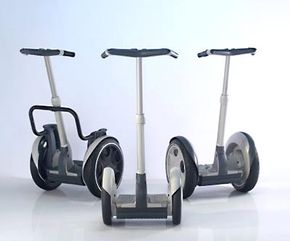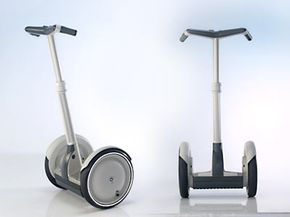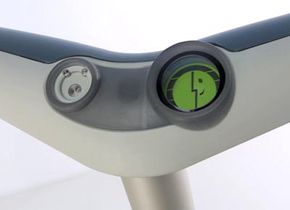At first glance, this device (called the SegwayTM Human Transporter) doesn't seem all that remarkable -- it looks like a high-tech scooter. But people who have tried it out claim that it is much, much more -- a completely different way to get around.
Dean Kamen, the machine's inventor, held especially high hopes for the Segway. In an interview with Time Magazine, he claimed that his machine "will be to the car what the car was to the horse and buggy."
Advertisement
Although the Segway hasn't quite lived up to its hype, it's most definitely an amazing machine. In this article, we'll find out what sets the Segway apart from earlier vehicles, and we'll see why its inventor thought it could change the world.
When Dean Kamen unveiled the Segway on ABC's "Good Morning America," he described the machine as "the world's first self-balancing human transporter." When you look at the machine in motion, you get an idea of what he's talking about.
Unlike a car, the Segway only has two wheels -- it looks something like an ordinary hand truck -- yet it manages to stay upright by itself.
To move forward or backward on the Segway, the rider just leans slightly forward or backward. To turn left or right, the rider turns the right handlebar forward or backward.
This balancing act is the most amazing thing about the Segway, and it is the key to its operation. To understand how this system works, it helps to consider Kamen's model for the device -- the human body.
If you stand up and lean forward, so that you are out of balance, you probably won't fall on your face. Your brain knows you are out of balance, because fluid in your inner ear shifts, so it triggers you to put your leg forward and stop the fall. If you keep leaning forward, your brain will keep putting your legs forward to keep you upright. Instead of falling, you walk forward, one step at a time.
The Segway does pretty much the same thing, except it has wheels instead of legs, a motor instead of muscles, a collection of microprocessors instead of a brain and a set of sophisticated tilt sensors instead of an inner-ear balancing system. Like your brain, the Segway knows when you are leaning forward. To maintain balance, it turns the wheels at just the right speed, so you move forward.
In the next section, we'll look at the parts that make up the Segway.
Advertisement



